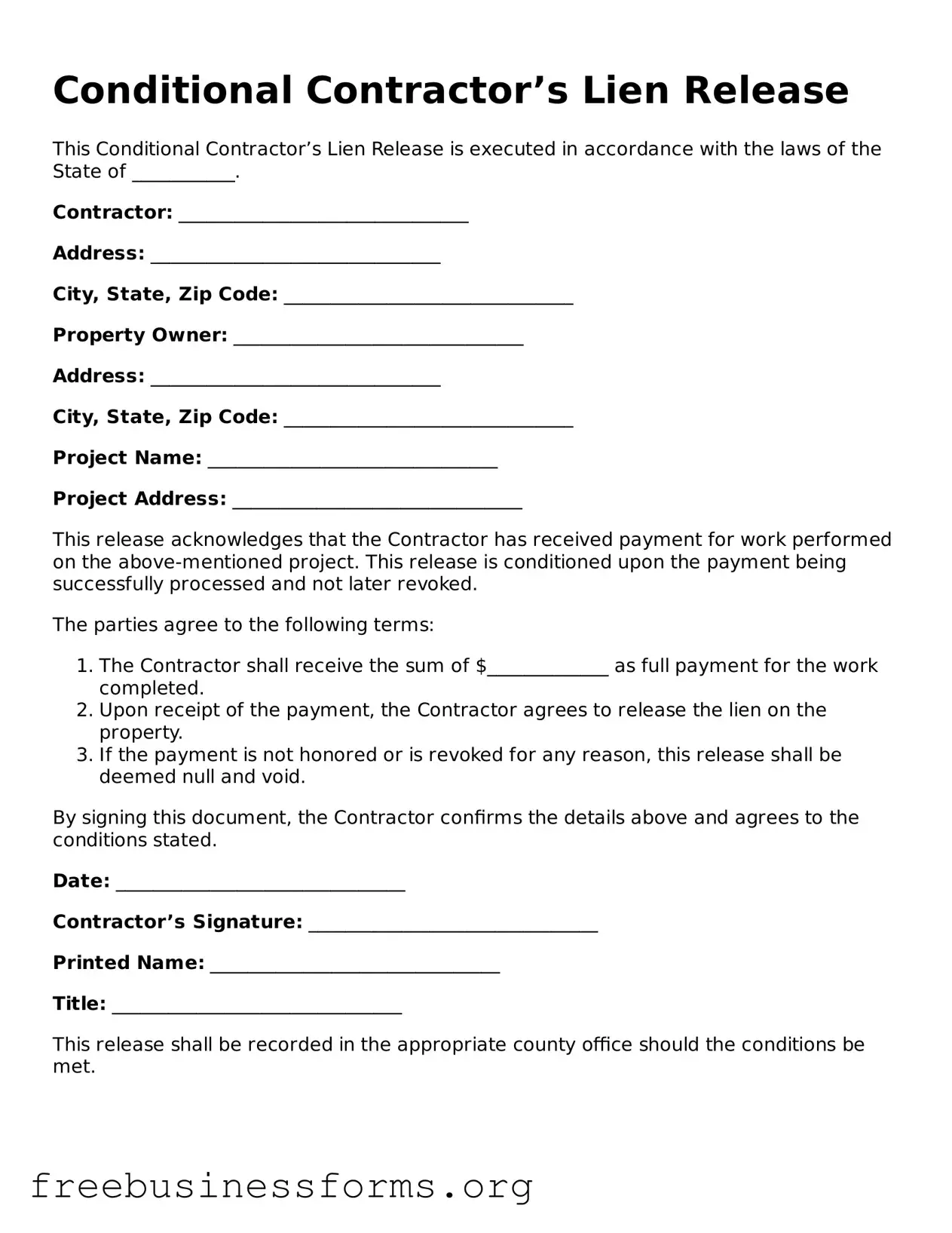Conditional Contractor’s Lien Release
This Conditional Contractor’s Lien Release is executed in accordance with the laws of the State of ___________.
Contractor: _______________________________
Address: _______________________________
City, State, Zip Code: _______________________________
Property Owner: _______________________________
Address: _______________________________
City, State, Zip Code: _______________________________
Project Name: _______________________________
Project Address: _______________________________
This release acknowledges that the Contractor has received payment for work performed on the above-mentioned project. This release is conditioned upon the payment being successfully processed and not later revoked.
The parties agree to the following terms:
- The Contractor shall receive the sum of $_____________ as full payment for the work completed.
- Upon receipt of the payment, the Contractor agrees to release the lien on the property.
- If the payment is not honored or is revoked for any reason, this release shall be deemed null and void.
By signing this document, the Contractor confirms the details above and agrees to the conditions stated.
Date: _______________________________
Contractor’s Signature: _______________________________
Printed Name: _______________________________
Title: _______________________________
This release shall be recorded in the appropriate county office should the conditions be met.
